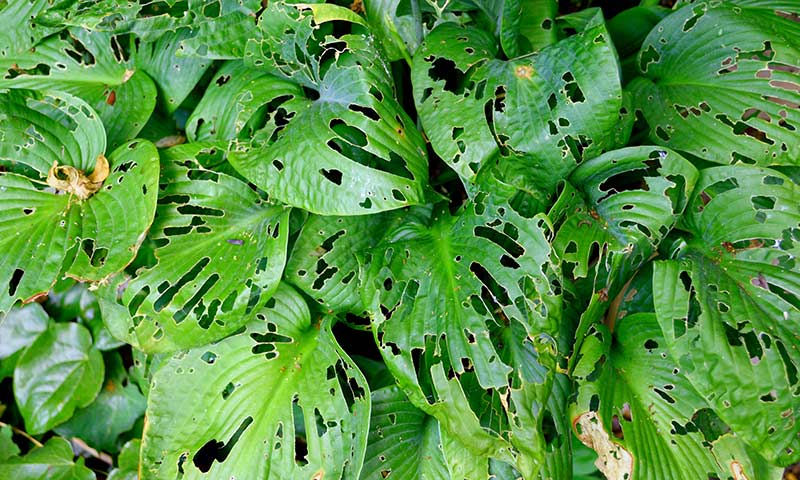Slug control

Slugs Problems
There are 24 different species of slug in Britain, about half of which can be found in the garden. Most slugs eat decaying vegetation, but readily switch to young or delicate plants, feeding on the leaves, stems, roots and tubers. They evolved from snails and in the course of doing so lost all or most of their shell. All slugs are hermaphrodites, in that they have both male and female sex organs. Mating and cross-fertilisation, but every individual produces spherical translucent eggs. These are laid in batches in damp places in the soil or under stones. A small replica of the adult emerges from the egg and takes between two months and a year to mature. The activity of slugs and snails is highest in the spring and autumn. Slugs need to keep moist at all times otherwise they will dehydrate and die; thus they are nocturnal, and more active when it is wet.
GardenAdvice.co.uk: Six steps to slug control in your garden
1. Soil conditions
Slugs need spaces to move through the soil; creating a good fine tilth will discourage them. Moving the soil surface with a rake in winter will expose many slugs and their eggs to frost damage.
- Hygenic practices
Remove fallen and damaged leaves from your tender plants remember slugs eat decaying vegetation, so remove this source of food.
3. Encourage predators
Ground and rove beetles, centipedes, frogs and toads, slow-worms, hedgehogs and many species of birds all eat significant numbers of slugs. To encourage frogs and toads maintain a pond (without goldfish) and for slow worms keep some long grass and avoid using a strimmer.
The Hedgehog Method:
Hedgehogs are predators of slugs so you need to attract them into the garden. At night time layout dog food, which they love to eat – don’t use bread or milk because it’s bad for them. Once we’ve got them into the garden we need to keep them, so provide them with a water-proof box, about 18 inches long and 12 inches deep, fill it with straw so it’s nice and snug, make it waterproof and hide it by covering it with leaves, the hedgehog can live in there. You’ll not only get rid of pests but, if you have children, they’ll be delighted.
The Trench Method:
To encourage ground and rover beetles. Dig a trench about six inches deep and three inches across, and then line it with pebbles and perspex edges. Beetles, which are a predator of slugs, will fall into the trench and can hide under the pebbles, which will protect them from birds. When the slug falls in, the beetle will have his dinner.
Parasitic nematodes
(Phasmarhabditis hermaphrodita) are available from Defenders Limited (01233 813121).
https://www.defenders.co.uk/pest-solutions/slug-control.html
These must be applied to the soil in solution. Be sure to follow the pack instructions carefully. Treatment should be done in a block and the soil temperature must be above five degrees C.
4. Barrier methods:
Various materials are uncomfortable for slugs and snails to cross and a barrier provides some protection for vulnerable and valuable plants.
Vermiculite
Vermiculite, which is normally a compost addition, is an interesting product because as it swells up with water – and we all know slugs love water – it moves which the slugs dislike. We’ve found Vermiculite to be 90% effective as a control; we put it around the base of a plant in a ring. It’s particularly good for plants that love water.
Gravel
The only gravel that works as a barrier is the crushed form because it has very sharp edges our favourite is horticultural grit 4 -8 mm.
Bark
Bark has a downside in that in wet weather it can help the slugs travel to your plants. However, in a dry season using a coarse bark made from large pieces is difficult for the slugs to move through because it becomes very dry.
5. Hand-picking and trapping:
slugs can be collected at night with a torch. Traps can concentrate slugs to specific areas for picking. Traps made from glossy magazines, old bits of carpet or old plastic plant trays make more effective slug traps. These provide a damp place to rest during the day and slugs can be removed in daylight. Such traps also provide refuge for ground beetles and centipedes that feed on slugs and their eggs. Using suicide plants to bring the slugs out of the soil for collection before you plant or sow your crop can also help to reduce numbers and restrict the damage.
6. Trapping
If you need results quickly trapping is the method to opt for.
The Beer Trap Method:
This is quite a traditional technique. All you need is a jar, put it on its side with a small amount of alcoholic beverage in it, and when slugs come along they’ll drown in it. It’s very simple, it’s effective, and you don’t need the whole can either!
Black plastic bag method:
If you have a slug attack in one area in your garden this is a quick method to reduce the numbers. Take one black bin liner, place it on the ground in between your tender plants, then place two lettuce well past their sell-by date. Finally, add two teacups of breakfast bran and pour a cup full of beer (bitter is best) over the lettuce. Leave overnight with the top open and check in the morning. The slug should have climbed into the bag overnight and as the sun rises in the morning, take shelter in the bottom of the bag, ready to be removed from your garden.